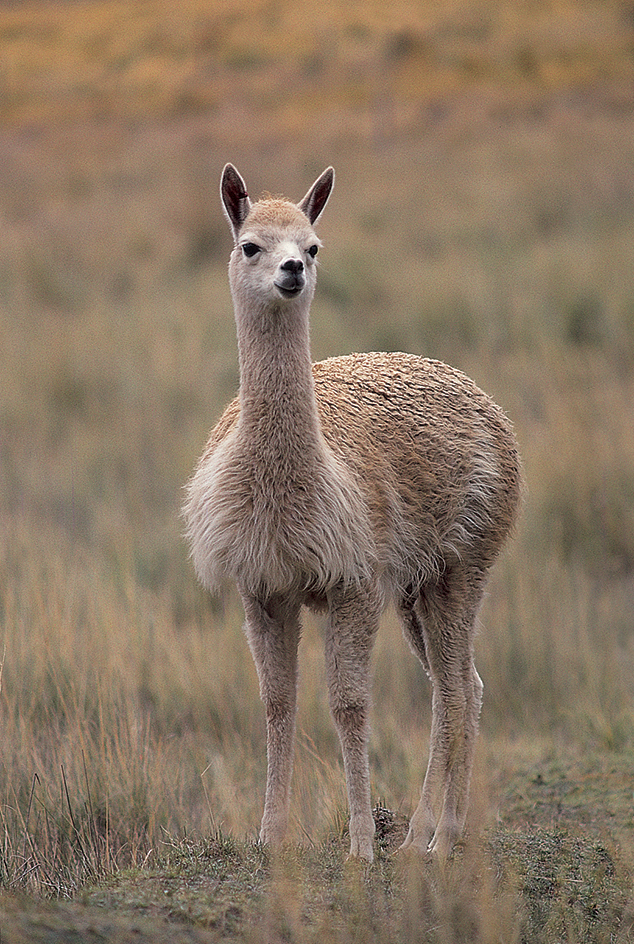Vicuña << vih KOON yuh >> is the smallest member of the camel family. It lives in the Andes Mountains of Bolivia, Chile, and Peru, in areas from 12,000 to 18,000 feet (3,660 to 5,490 meters) above sea level. Its home is generally near the snowline. The vicuña and guanaco are the wild members of the camel family in South America. The alpaca and llama are domesticated. None has a hump.

The vicuña measures 21/4 to 3 feet (70 to 90 centimeters) high at the shoulder and weighs from 75 to 140 pounds (35 to 65 kilograms). It has a reddish-yellow to deep tan or reddish-brown upper body. Its belly and lower legs are white.
Vicuñas eat grass and other vegetation. They usually live in herds that have one male and several females. The male defends a territory (area of ground) from other males.
Vicuñas have an extremely fine fleece used to make high-grade cloth. A vicuña produces about 4 ounces (113 grams) of fleece a year. The fleece grows until it hangs below the flanks and knees. Only the inner fleece is used to make cloth.
The ancient Inca protected vicuñas and hunted them only once in four years. Only royalty could use the fleece. In the early 1900’s, so many vicuñas were killed for their wool that the animal became endangered by the 1960’s. Since then, conservation efforts have increased vicuña populations.
